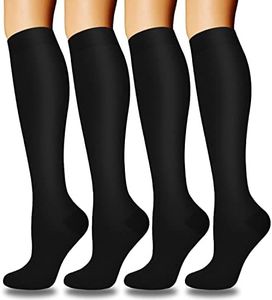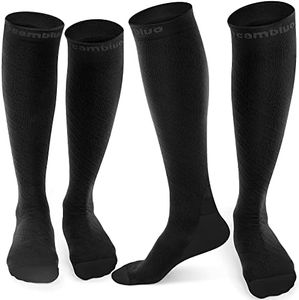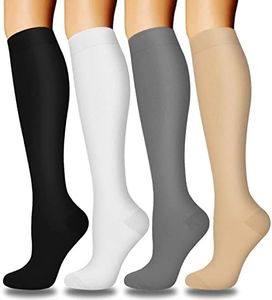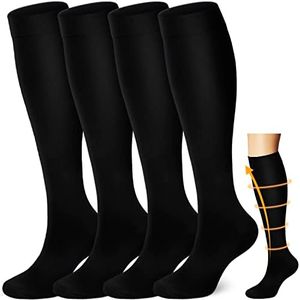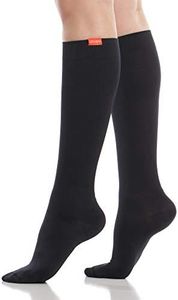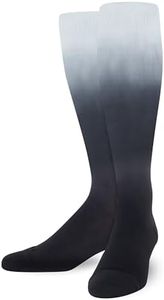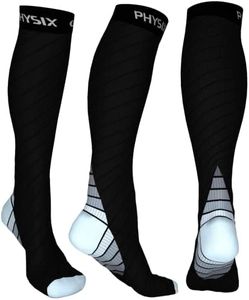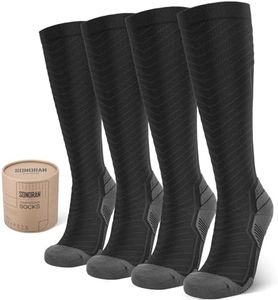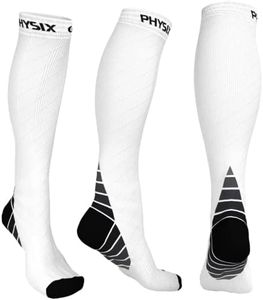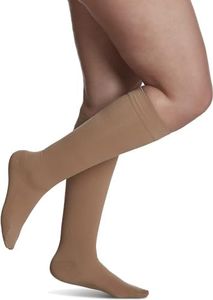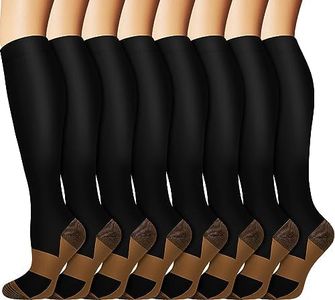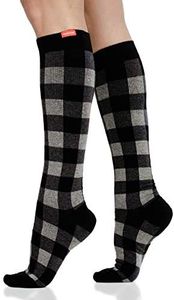We Use CookiesWe use cookies to enhance the security, performance,
functionality and for analytical and promotional activities. By continuing to browse this site you
are agreeing to our privacy policy
10 Best Compression Socks
From leading brands and best sellers available on the web.Buying Guide for the Best Compression Socks
Compression socks are specially designed socks that apply gentle pressure to your legs and ankles, helping to improve blood flow and reduce discomfort or swelling. They are commonly used by people who stand or sit for long periods, athletes, travelers, or those with certain medical conditions. When choosing compression socks, it's important to consider your specific needs, such as comfort, intended use, and any health recommendations. Understanding the key features will help you select the best pair for your lifestyle and requirements.Compression Level (mmHg)Compression level, measured in millimeters of mercury (mmHg), indicates how much pressure the socks apply to your legs. This is important because the right amount of pressure can help with circulation, reduce swelling, and prevent discomfort. Compression levels are usually divided into light (8-15 mmHg), moderate (15-20 mmHg), firm (20-30 mmHg), and extra firm (30-40 mmHg). Light compression is suitable for everyday wear or mild swelling, moderate is good for travel or mild varicose veins, firm is often recommended for more serious swelling or after surgery, and extra firm is typically used for medical conditions under a doctor’s advice. To pick the right level, consider your reason for wearing them—if it’s for general comfort or travel, lighter compression is usually enough, but for medical needs, you may need a higher level as recommended by a healthcare professional.
Sock LengthSock length refers to how high the socks go on your leg, which can affect both comfort and effectiveness. The main options are ankle, crew, knee-high, and thigh-high. Ankle and crew lengths are best for mild support or for use during sports, while knee-high socks are the most common for improving circulation in the lower legs. Thigh-high socks provide support for the entire leg and are often used for more serious medical needs. Choose the length based on where you need the most support—if you have swelling in your lower legs, knee-high is usually sufficient, but if you need support above the knee, consider thigh-high.
MaterialThe material of compression socks affects their comfort, breathability, and durability. Common materials include nylon, spandex, cotton, and blends. Nylon and spandex are stretchy and provide a snug fit, while cotton adds softness and breathability. Some socks also have moisture-wicking properties to keep your feet dry. If you plan to wear them for long periods or during exercise, look for breathable, moisture-wicking materials. For everyday use, comfort and softness may be more important. Think about your skin sensitivity and the climate you’ll be wearing them in when choosing the material.
Fit and SizingProper fit is crucial for compression socks to work effectively and feel comfortable. Sizing is usually based on your shoe size, calf circumference, and sometimes ankle measurement. A sock that is too tight can be uncomfortable or even harmful, while one that is too loose won’t provide enough support. Always check the sizing chart provided by the manufacturer and measure your legs as instructed. If you’re between sizes, consider your comfort and whether you prefer a snug or slightly looser fit. The right size will stay up without pinching or sliding down.
Toe Style (Closed vs. Open Toe)Compression socks come in closed-toe and open-toe styles. Closed-toe socks cover the entire foot, providing warmth and uniform compression, while open-toe socks leave the toes exposed, which can be more comfortable in warm weather or if you have sensitive toes. Open-toe styles are also useful if you need to check your toes for circulation or wear sandals. Choose the style that matches your comfort needs and the type of shoes you plan to wear with the socks.
